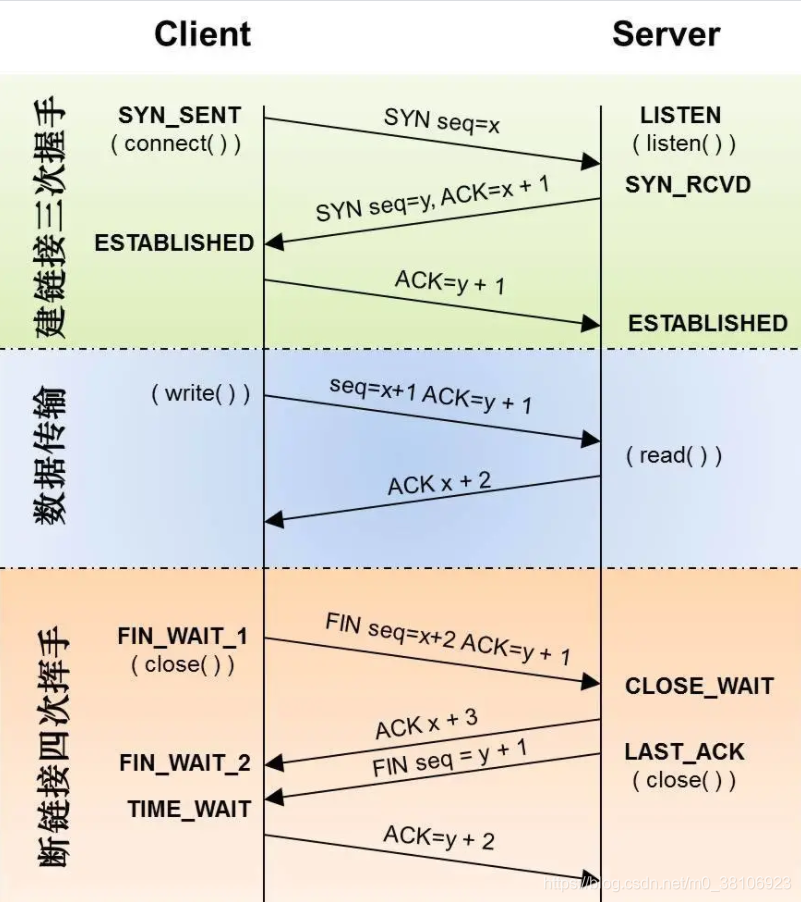目录
一、用法精讲
326、pandas.Series.str.normalize方法
326-1、语法
326-2、参数
326-3、功能
326-4、返回值
326-5、说明
326-6、用法
326-6-1、数据准备
326-6-2、代码示例
326-6-3、结果输出
327、pandas.Series.str.pad方法
327-1、语法
327-2、参数
327-3、功能
327-4、返回值
327-5、说明
327-6、用法
327-6-1、数据准备
327-6-2、代码示例
327-6-3、结果输出
328、pandas.Series.str.partition方法
328-1、语法
328-2、参数
328-3、功能
328-4、返回值
328-5、说明
328-6、用法
328-6-1、数据准备
328-6-2、代码示例
328-6-3、结果输出
329、pandas.Series.str.removeprefix方法
329-1、语法
329-2、参数
329-3、功能
329-4、返回值
329-5、说明
329-6、用法
329-6-1、数据准备
329-6-2、代码示例
329-6-3、结果输出
330、pandas.Series.str.removesuffix方法
330-1、语法
330-2、参数
330-3、功能
330-4、返回值
330-5、说明
330-6、用法
330-6-1、数据准备
330-6-2、代码示例
330-6-3、结果输出



一、用法精讲
326、pandas.Series.str.normalize方法
326-1、语法
# 326、pandas.Series.str.normalize方法
pandas.Series.str.normalize(form)
Return the Unicode normal form for the strings in the Series/Index.For more information on the forms, see the unicodedata.normalize().Parameters:
form
{‘NFC’, ‘NFKC’, ‘NFD’, ‘NFKD’}
Unicode form.Returns:
Series/Index of objects.326-2、参数
326-2-1、form(必须):指定了规范化的形式,可以选择以下四种形式:
- 'NFC':Normalization Form C (Canonical Composition),规范化形式C,将分解的字符组合成一个字符。比如,将 "é" 和 "é" 规范化为 "é"。
- 'NFD':Normalization Form D (Canonical Decomposition),规范化形式D,将字符分解为其基础字符和组合标记。比如,将 "é" 分解为 "e" 和 "́"。
- 'NFKC':Normalization Form KC (Compatibility Composition),兼容性组合,将兼容性等价的字符组合到一起,同时执行 NFC 规范化。
- 'NFKD':Normalization Form KD (Compatibility Decomposition),兼容性分解,将字符分解为其兼容性等价的基础字符和组合标记。
326-3、功能
对字符串进行规范化处理,确保字符序列的唯一性,它对于处理来自不同来源的数据、统一字符串格式、提高字符串比较的一致性非常有用。
326-4、返回值
返回一个新的pandas.Series对象,其中每个字符串都经过指定形式的规范化处理。
326-5、说明
无
326-6、用法
326-6-1、数据准备
无326-6-2、代码示例
# 326、pandas.Series.str.normalize方法
import pandas as pd
# 示例数据
data = pd.Series(['café', 'e\u0301clair', 'cafe\u0301'])
# 使用NFC进行规范化
normalized_data = data.str.normalize('NFC')
print(normalized_data)
# 使用NFD进行规范化
normalized_data = data.str.normalize('NFD')
print(normalized_data)
# 使用NFKC进行规范化
normalized_data = data.str.normalize('NFKC')
print(normalized_data)
# 使用NFKD进行规范化
normalized_data = data.str.normalize('NFKD')
print(normalized_data)326-6-3、结果输出
# 326、pandas.Series.str.normalize方法
# 0 café
# 1 éclair
# 2 café
# dtype: object
# 0 café
# 1 éclair
# 2 café
# dtype: object
# 0 café
# 1 éclair
# 2 café
# dtype: object
# 0 café
# 1 éclair
# 2 café
# dtype: object327、pandas.Series.str.pad方法
327-1、语法
# 327、pandas.Series.str.pad方法
pandas.Series.str.pad(width, side='left', fillchar=' ')
Pad strings in the Series/Index up to width.Parameters:
width
int
Minimum width of resulting string; additional characters will be filled with character defined in fillchar.side
{‘left’, ‘right’, ‘both’}, default ‘left’
Side from which to fill resulting string.fillchar
str, default ‘ ‘
Additional character for filling, default is whitespace.Returns:
Series or Index of object
Returns Series or Index with minimum number of char in object.327-2、参数
327-2-1、width(必须):整数,用于定义字符串在填充后的总宽度,如果字符串的长度小于这个宽度,将会在指定方向填充字符,使其达到指定宽度。
327-2-2、side(可选,默认值为'left'):指定填充的方向,选项有:
- 'left':在字符串的左侧进行填充。
- 'right':在字符串的右侧进行填充。
- 'both':在字符串的两侧进行填充,如果需要在两侧填充,但总宽度不均匀,多余的填充字符会放在右侧。
327-2-3、fillchar(可选,默认值为' '):字符串,用于填充的字符,该字符必须是单个字符长度的字符串。
327-3、功能
将字符串填充到指定的宽度,这对于对齐文本或格式化输出非常有用,根据需要,您可以选择在字符串的左侧、右侧或两侧添加填充字符。
327-4、返回值
返回一个新的pandas.Series对象,其中每个字符串都经过了指定方向和填充字符的处理,长度达到了指定的宽度。
327-5、说明
无
327-6、用法
327-6-1、数据准备
无327-6-2、代码示例
# 327、pandas.Series.str.pad方法
import pandas as pd
# 示例数据
data = pd.Series(['cat', 'dog', 'elephant'])
# 在左侧填充,使每个字符串的长度达到10,填充字符为'*'
padded_left = data.str.pad(width=10, side='left', fillchar='*')
# 在右侧填充,使每个字符串的长度达到10,填充字符为'-'
padded_right = data.str.pad(width=10, side='right', fillchar='-')
# 在两侧填充,使每个字符串的长度达到10,填充字符为'~'
padded_both = data.str.pad(width=10, side='both', fillchar='~')
print("Left Padded:\n", padded_left)
print("Right Padded:\n", padded_right)
print("Both Sides Padded:\n", padded_both)327-6-3、结果输出
# 327、pandas.Series.str.pad方法
# Left Padded:
# 0 *******cat
# 1 *******dog
# 2 **elephant
# dtype: object
# Right Padded:
# 0 cat-------
# 1 dog-------
# 2 elephant--
# dtype: object
# Both Sides Padded:
# 0 ~~~cat~~~~
# 1 ~~~dog~~~~
# 2 ~elephant~
# dtype: object328、pandas.Series.str.partition方法
328-1、语法
# 328、pandas.Series.str.partition方法
pandas.Series.str.partition(sep=' ', expand=True)
Split the string at the first occurrence of sep.This method splits the string at the first occurrence of sep, and returns 3 elements containing the part before the separator, the separator itself, and the part after the separator. If the separator is not found, return 3 elements containing the string itself, followed by two empty strings.Parameters:
sep
str, default whitespace
String to split on.expand
bool, default True
If True, return DataFrame/MultiIndex expanding dimensionality. If False, return Series/Index.Returns:
DataFrame/MultiIndex or Series/Index of objects.328-2、参数
328-2-1、sep(可选,默认值为' '):字符串,用于分割字符串的分隔符,该分隔符可以是任意字符或字符串。如果字符串中没有找到指定的分隔符,那么结果将包含原字符串,并且中间和右侧的结果为空字符串。
328-2-2、expand(可选,默认值为True):布尔值,指定返回值的形式。
- 如果为True,方法将返回一个DataFrame,其中包含三列,分别对应分隔符前的部分、分隔符本身、分隔符后的部分。
- 如果为False,方法将返回一个Series,其中每个元素是一个包含这三部分的元组(before,sep,after)。
328-3、功能
通过指定的分隔符将每个字符串分为三部分,该方法非常适合用于处理包含特定分隔符的字符串,帮助我们快速获取分隔符两侧的内容。
328-4、返回值
根据expand参数的值,该方法有两种不同的返回值:
- 当expand=True时,返回一个DataFrame,每列分别表示分隔符前的部分、分隔符本身、分隔符后的部分。
- 当expand=False时,返回一个Series,其中每个元素是一个(before,sep,after)的元组。
328-5、说明
无
328-6、用法
328-6-1、数据准备
无328-6-2、代码示例
# 328、pandas.Series.str.partition方法
import pandas as pd
# 示例数据
data = pd.Series(['apple-pie', 'banana-split', 'cherry'])
# 使用'-'作为分隔符进行分割,expand=True,返回DataFrame
partitioned_df = data.str.partition(sep='-', expand=True)
# 使用'-'作为分隔符进行分割,expand=False,返回Series
partitioned_series = data.str.partition(sep='-', expand=False)
print("Partitioned DataFrame:\n", partitioned_df)
print("Partitioned Series:\n", partitioned_series)328-6-3、结果输出
# 328、pandas.Series.str.partition方法
# Partitioned DataFrame:
# 0 1 2
# 0 apple - pie
# 1 banana - split
# 2 cherry
# Partitioned Series:
# 0 (apple, -, pie)
# 1 (banana, -, split)
# 2 (cherry, , )
# dtype: object329、pandas.Series.str.removeprefix方法
329-1、语法
# 329、pandas.Series.str.removeprefix方法
pandas.Series.str.removeprefix(prefix)
Remove a prefix from an object series.If the prefix is not present, the original string will be returned.Parameters:
prefix
str
Remove the prefix of the string.Returns:
Series/Index: object
The Series or Index with given prefix removed.329-2、参数
329-2-1、prefix(必须):字符串,指定要移除的前缀,如果字符串的开头部分与prefix匹配,那么该部分将被移除;如果字符串不以prefix开头,则字符串保持不变。
329-3、功能
从每个字符串的开头移除指定的前缀,该方法特别适用于清理数据时,需要删除统一的开头标识符或固定格式的前缀。
329-4、返回值
返回一个新的Series,其中每个字符串都已经移除了指定的前缀,如果原始字符串不包含指定的前缀,则返回的字符串与原字符串相同。
329-5、说明
无
329-6、用法
329-6-1、数据准备
无329-6-2、代码示例
# 329、pandas.Series.str.removeprefix方法
import pandas as pd
# 示例数据
data = pd.Series(['prefix_text1', 'prefix_text2', 'no_prefix_text'])
# 使用'removeprefix'方法移除前缀'prefix_'
removed_prefix = data.str.removeprefix('prefix_')
print("Original Series:\n", data)
print("Series after removing prefix:\n", removed_prefix)329-6-3、结果输出
# 329、pandas.Series.str.removeprefix方法
# Original Series:
# 0 prefix_text1
# 1 prefix_text2
# 2 no_prefix_text
# dtype: object
# Series after removing prefix:
# 0 text1
# 1 text2
# 2 no_prefix_text
# dtype: object330、pandas.Series.str.removesuffix方法
330-1、语法
# 330、pandas.Series.str.removesuffix方法
pandas.Series.str.removesuffix(suffix)
Remove a suffix from an object series.If the suffix is not present, the original string will be returned.Parameters:
suffix
str
Remove the suffix of the string.Returns:
Series/Index: object
The Series or Index with given suffix removed.330-2、参数
330-2-1、suffix(必须):字符串,指定要移除的后缀,如果字符串的结尾部分与suffix匹配,那么该部分将被移除;如果字符串不以suffix结尾,则字符串保持不变。
330-3、功能
从每个字符串的结尾移除指定的后缀,该方法特别适用于清理数据时,需要删除统一的结尾标识符或固定格式的后缀。
330-4、返回值
返回一个新的Series,其中每个字符串都已经移除了指定的后缀,如果原始字符串不包含指定的后缀,则返回的字符串与原字符串相同。
330-5、说明
无
330-6、用法
330-6-1、数据准备
无330-6-2、代码示例
# 330、pandas.Series.str.removesuffix方法
import pandas as pd
# 示例数据
data = pd.Series(['text1_suffix', 'text2_suffix', 'text3_nosuffix'])
# 使用'removesuffix'方法移除后缀'_suffix'
removed_suffix = data.str.removesuffix('_suffix')
print("Original Series:\n", data)
print("Series after removing suffix:\n", removed_suffix)330-6-3、结果输出
# 330、pandas.Series.str.removesuffix方法
# Original Series:
# 0 text1_suffix
# 1 text2_suffix
# 2 text3_nosuffix
# dtype: object
# Series after removing suffix:
# 0 text1
# 1 text2
# 2 text3_nosuffix
# dtype: object






![【upload]-ini-[SUCTF 2019]CheckIn-笔记](https://i-blog.csdnimg.cn/direct/fe715a6b2f60466db9f1c2dad99c36c7.png)










